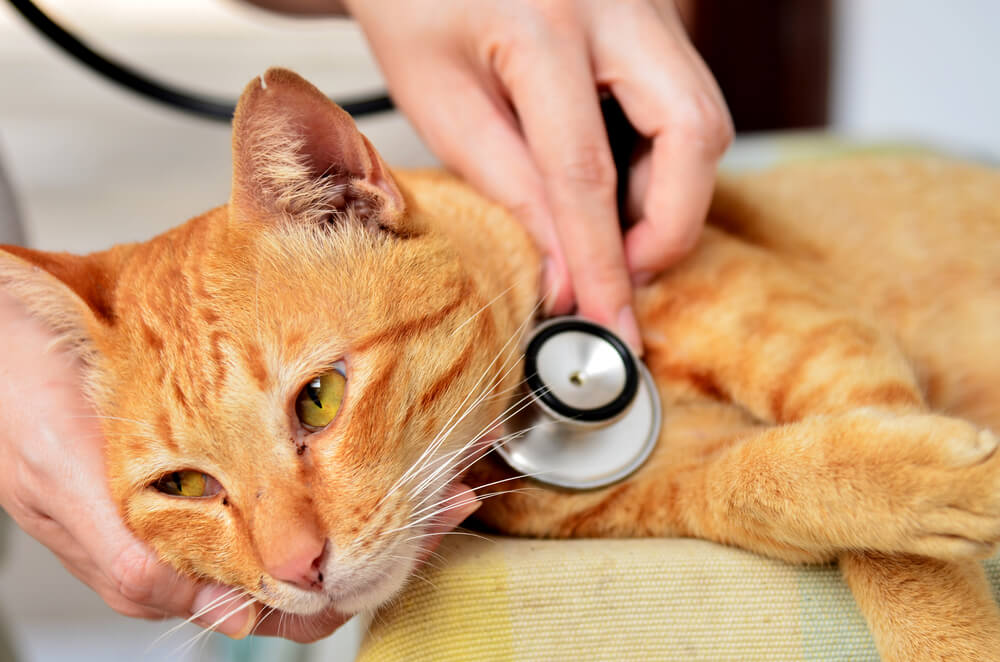Watching your pet have a seizure can be a frightening and helpless experience—time seems to stand still as your pet’s body and behavior are contorted by an unseen force that cannot be stopped. However, knowing what to do during and after a pet seizure can help you stay calm, and provide appropriate and effective care.
Recognizing seizure activity in pets
Seizures are caused by abnormal electrical activity in the brain—a sudden and sometimes dramatic interruption of regular function. Depending on their severity and location, seizures can fall into several categories, and understanding traditional and nontraditional appearances is essential to recognizing your pet’s behavior as a seizure, and responding accordingly. Seizure types include:
- Grand mal seizure — The most obvious and severe form, grand mal seizures typically include unconsciousness and full body involvement (e.g., rigidity, convulsing).
- Focal seizure — Focal seizures affect only a certain brain area, and may be limited to one side of the face, body, or a specific limb.
- Psychomotor seizure — These seizures are recognized by repetitive or obsessive behaviors (e.g., circling, head turning, biting at the air).
Common seizure signs or behaviors include:
- Glassy or unfocused eyes
- Uncharacteristic stillness
- Uncoordinated movements
- Collapse
- Unresponsiveness
- Convulsions, which may include shaking, tremoring, erratic jerking movements, or paddling limbs
- Chomping or snapping at the air
- Loss of consciousness
- Muscle rigidity or stiffness
- Drooling or foaming at the mouth
- Involuntary urination or defecation
- Vocalizing (e.g., whining, crying, barking, howling)
Common seizure causes in pets
Seizures in pets are a common source of owner and veterinarian frustration, as the true cause is often unknown. Recurring seizures without any known cause are known as idiopathic epilepsy, and are treated symptomatically with medication, to prevent future episodes.
Less frequently, isolated seizures may be traced to toxin ingestion, liver or kidney disease, brain tumors, or electrolyte imbalance. Following your pet’s first seizure, the veterinarian will take a complete history, perform a physical examination, and potentially run blood work to look for these and other potential causes.
How to respond to your pet’s seizure
Whether your pet experiences a grand mal seizure or a small focal episode, the appropriate actions during and after the event can protect your pet from additional harm, and assist the veterinarian in diagnosing and treating your pet. Here are six steps to remember when your pet has a seizure.
- Stay calm when your pet is seizing — Seizures can be dramatic and emotional to witness, but knowing that your pet is unconscious during a grand mal seizure and therefore not experiencing any pain or fear is important. Although your pet may cry, scream, or assume unnatural body positions (e.g., cats commonly tilt their head up and backward), they are not suffering. Replace your natural fear and panic with actionable tasks to ensure your pet’s safety.
- Note the time your pet is seizing — Whether you witness your pet’s seizure from the beginning or find your pet already seizing, immediately check the time, because clocking the approximate start and end times can help you determine if and when you should transport them to the nearest veterinary emergency hospital. As a general rule, seizures lasting more than two to three minutes should be treated as an emergency. Seizure activity causes a pet’s internal temperature to skyrocket, which can lead to permanent organ damage and failure without prompt treatment. If the seizure subsides after two to three minutes, allow your pet to recover in a safe, quiet place and observe them for additional seizures. Write down any notes or observations about the seizure, so you can relay this information to the veterinarian.
- Protect your pet from falling — Unconscious pets may be seriously injured by falling off furniture or down stairs. Protect your small dog or cat by moving them to the floor, gently restraining them, or body-block larger pets. As you do, watch for any erratic and sometimes forceful limb or head movements that could lead to injury. After your pet’s seizure, continue to keep them away from stairs or furniture. The recovery phase (i.e., the post-ictal stage) can include disorientation, altered vision, weakness, and loss of coordination, which may result in a fall.
- Understand that your pet may urinate, defecate, or vocalize — The seizure’s electrical activity can stimulate unpredictable behavior, but these actions are normal, and do not indicate physical or neurological injury. If your pet does make a mess, ensure they do not slip and fall as they recover.
- Never put your fingers or hands in your pet’s mouth — Pets are not at risk for swallowing their tongue during a seizure, but may have involuntary jaw movements that can cause them to bite or entrap your hand or fingers. If your pet is lying in a puddle of drool or vomit, you may gently lift their head onto a towel.
- Call your veterinarian — If the seizure ends after two to three minutes, contact Neighborhood Vets Mobile Care. First seizures are always a cause for concern, and merit an appointment and examination as soon as possible. If your pet’s seizure lasts longer than three minutes, transport your pet to the nearest veterinary emergency hospital for immediate care and stabilization.

Unless an obvious cause can be determined for your pet’s initial seizure (i.e., kidney failure, toxin ingestion), most pet owners are advised to monitor their pet, and keep a journal of any future seizure activity. If the pet’s seizures increase in frequency—typically several per month— additional diagnostics (e.g., additional blood work or brain imaging) and medical management with anti-seizure medication will be initiated.
If your pet has had a seizure, or you question whether your pet’s unusual behavior is actually a focal or psychomotor seizure, do not hesitate to contact Neighborhood Vets Mobile Care for guidance.

